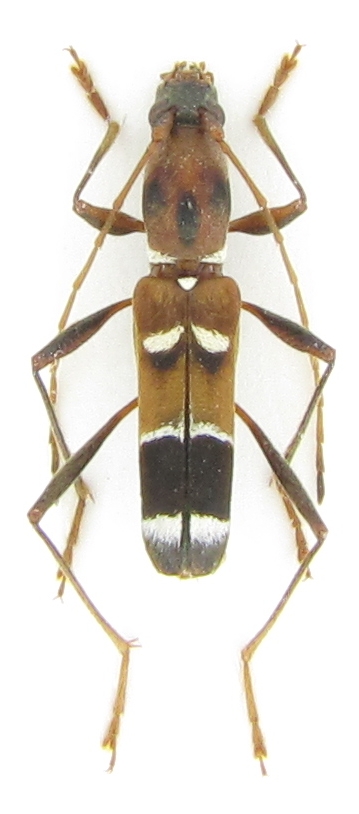| Author |
 Topic Topic  |
|
|
Vitali
Member Rosenbergia
   
Estonia
1001 Posts |
 Posted - 08/12/2013 : 21:22:36 Posted - 08/12/2013 : 21:22:36



|

126.89 KB
Seems to be Demonax leucoscutellatus (Hope, 1831) distributed in Taiwan. Was indicated as a new species for China in "Iconography...", but the name was given with a mistake as "leucostellatus".
This particular beetle comes from Guangxi province. |
Edited by - Xavier on 30/01/2016 20:31:55 |
|
|
Francesco
Forum Admin
    
Luxembourg
9511 Posts |
 Posted - 08/12/2013 : 21:52:44 Posted - 08/12/2013 : 21:52:44




|
I do not know if this species is really present in Taiwan, being originally described from Nepal.
The description of the dark form that Gahan gave in his book (1906: p. 286-7) fits enough. |
 |
|
|
Vitali
Member Rosenbergia
   
Estonia
1001 Posts |
 Posted - 08/12/2013 : 22:18:20 Posted - 08/12/2013 : 22:18:20



|
| Yes, indeed. Thank you. My misprint because of the previous posting. |
 |
|
|
Xavier
Scientific Collaborator
    
France
12338 Posts |
 Posted - 09/12/2013 : 17:45:09 Posted - 09/12/2013 : 17:45:09



|
An interesting picture to see, here : http://www.cerambycoidea.com/forum/topic.asp?TOPIC_ID=16056
Lang Song (or Lang Son) is in north Vietnam, close to the border of China ( Guangxi)
I can't see if it's the same species (2nd white band looks different), but I can't see on your picture spines on antenna. So, is your specimen really a Demonax ? (same question for the type !! ) |
Edited by - Xavier on 09/12/2013 17:50:24 |
 |
|
|
Vitali
Member Rosenbergia
   
Estonia
1001 Posts |
 Posted - 09/12/2013 : 19:59:33 Posted - 09/12/2013 : 19:59:33



|
Xavier, the species in your reference here looks identical to my beetle. I can also clearly see the spikes in the third and fourth antennomere in that beetle (have a look at the right antennae in the right photo). This is also exactly the case with my beetle. The spines in the third and fourth antennomeres in my beetle are very distinct. I tried to make a photo, but the resolution of my camera is insufficient . I can later do this with a microscope, if necessary. I suggest C. castaneorufus to be a synonym of D. leocoscutellatus. . I can later do this with a microscope, if necessary. I suggest C. castaneorufus to be a synonym of D. leocoscutellatus. |
 |
|
| |
 Topic Topic  |
|


